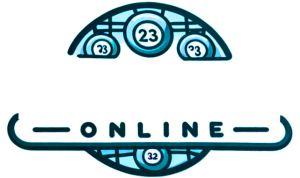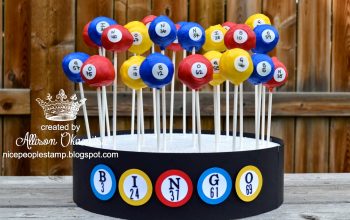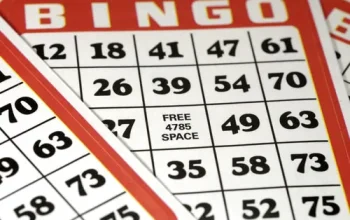Let’s be honest. When you think of bingo, you might picture a dusty community hall, the scent of weak coffee, and a sea of dabbers. It’s a classic, sure. But the game is undergoing a revolution. It’s shedding its old skin and emerging as a vibrant, fast-paced form of entertainment for a whole new generation.
Here’s the deal: game designers and venue operators are getting creative. They’re twisting the rules, introducing wild new themes, and leveraging technology to create experiences that are, frankly, a world away from your grandma’s Tuesday night game. The core thrill—that heart-pounding anticipation of a single number—remains. But everything around it? It’s being completely reimagined.
Why the Sudden Shift? The New Bingo Player
This isn’t just change for change’s sake. It’s a direct response to a shifting audience. Modern players, especially younger ones, crave different things. They want social interaction, but often in a more dynamic, tech-infused environment. They have shorter attention spans and a love for variety. They’re used to the instant gratification of video games and the curated experiences of social media.
So, the industry is adapting. The goal? To make bingo feel less like a passive lottery and more like an active, engaging event. It’s about the experience as a whole—the music, the theme, the host, the pace. It’s a night out, not just a game.
The New Wave: Bingo Variants You Need to Try
Okay, let’s dive into the good stuff. What are these newfangled games actually like?
1. Speed Bingo
This one’s for the adrenaline junkies. Imagine traditional bingo, but on an espresso shot. The numbers are called at a breakneck pace. Games last minutes, not half an hour. It’s intense, chaotic, and incredibly fun. You don’t have time to overthink your card; it’s all about instinct and fast fingers. This variant is perfect for fitting a few quick games into a lunch break or as a high-energy opener for a longer bingo session.
2. Pattern Bingo (Beyond the Lines)
Forget simple lines and full houses. Pattern bingo turns your card into a canvas. The caller announces a shape to be formed—a picture frame, a letter ‘X’, a diamond, even something whimsical like a rocket ship. This adds a huge layer of strategy. You’re not just listening for numbers; you’re visually mapping a shape on your card. It engages a different part of your brain and makes every game feel unique.
3. Shotgun Bingo
This one is a real game-changer. In Shotgun Bingo, players don’t just have one card. They often have multiple, and the numbers aren’t called one by one. Instead, a whole set of numbers—say, 10 or 15—are revealed all at once. It’s a mad dash to scan your cards and mark off everything you can before the next batch is released. It’s less about patient listening and more about frantic, exhilarating pattern recognition. The pace is utterly relentless.
4. Themed & Event Bingo
This is where bingo fully embraces its role as an event. The game is wrapped in a theme. Think Drag Queen Bingo, where the host is a fabulous performer and the calls are laced with wit and glamour. Or 90s Pop Bingo, where numbers are replaced by song clips or celebrity names. There’s Punk Rock Bingo, Cosmic Bingo with blacklights and glow-in-the-dark daubers… the possibilities are endless. The bingo itself is almost secondary to the overall vibe, making it a massive draw for niche communities.
Rule Tweaks and Modifications Shaking Things Up
It’s not just new games. The classic rules are getting a makeover, too. These small changes have a huge impact on strategy and fun.
The “Wild Ball” or “Free Number”
Before a game begins, a random number is drawn as the “Wild Ball.” This number can be used as any number on your card. It introduces a lovely element of chance and can completely change the dynamic of a game, allowing for surprise wins from seemingly nowhere.
Progressive Jackpots and Bonus Rounds
Why have one winner when you can have several? Many modern games feature a progressive jackpot that grows until a specific, hard-to-achieve pattern is completed within a certain number of calls. Others include bonus rounds—like a “second chance” game for all non-winners, or a “guess the suit” card game for an extra prize. This keeps the excitement high even after the main game is over.
Multiple Winners and Split Pots
To combat the disappointment of a single winner in a large crowd, some venues now structure prizes for multiple patterns. For example, the first person to get a single line wins a small prize, the first to get two lines wins more, and the full house takes the main pot. This spreads the joy and keeps more players invested for longer.
The Tech Factor: How Apps and Online Play Are Reshaping the Game
You can’t talk about modern bingo without talking about technology. Online bingo sites and mobile apps are laboratories for innovation. They allow for features that are impossible in a physical hall.
Auto-daub is the big one. The software marks your numbers for you, freeing you up to chat, play on multiple cards (sometimes 100+!), and just enjoy the social atmosphere. This has led to the rise of “social bingo” where the chat room is as important as the game itself.
Furthermore, online platforms can experiment with unique bingo game mechanics more easily—integrating mini-games, power-ups, and animated themes that would be logistically nightmarish in person. They’re pushing the boundaries of what bingo can be.
The Future is a Hybrid
So, where does bingo go from here? The most successful models seem to be hybrid ones. A physical event with a fantastic human host, but augmented by digital cards on your phone that allow for auto-daub and interactive bonus games. The tactile joy of the dabber meets the convenience and feature-set of an app.
The essence of bingo—that shared, nervous, hopeful energy as you wait for that last number—is timeless. But the vessel that carries that feeling is being remade. It’s becoming faster, more visual, more social, and infinitely more varied. It’s no longer just a game of chance. It’s a designed experience.
And that’s a winning number for everyone.




